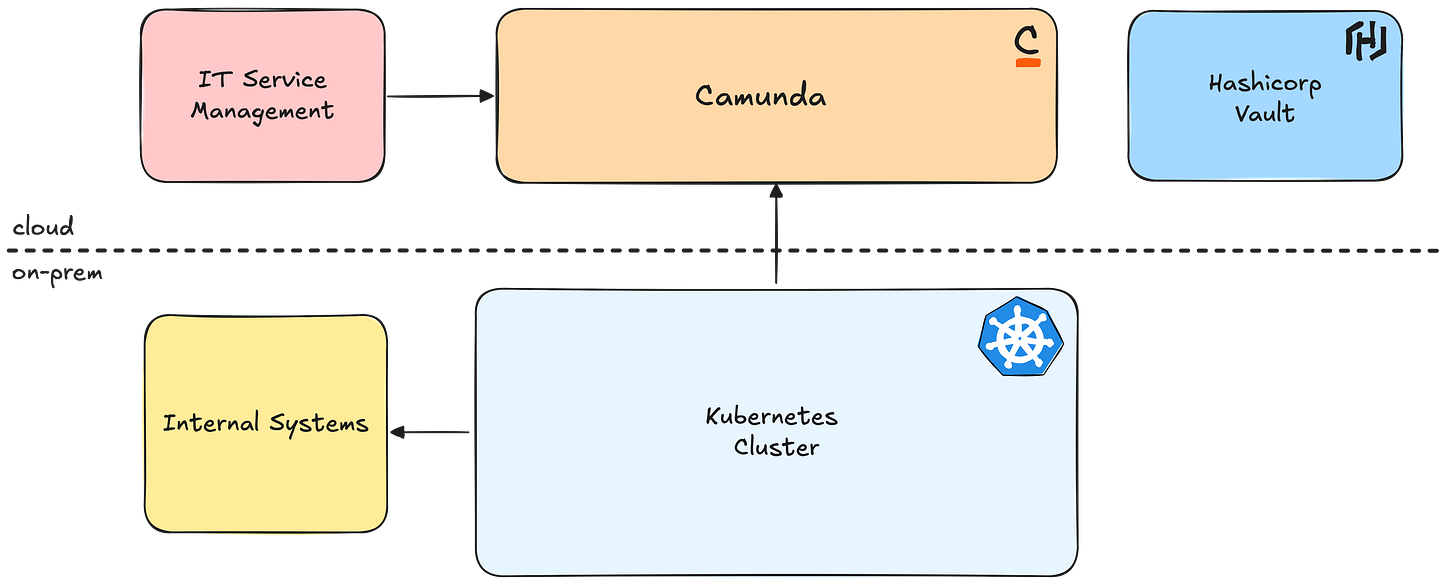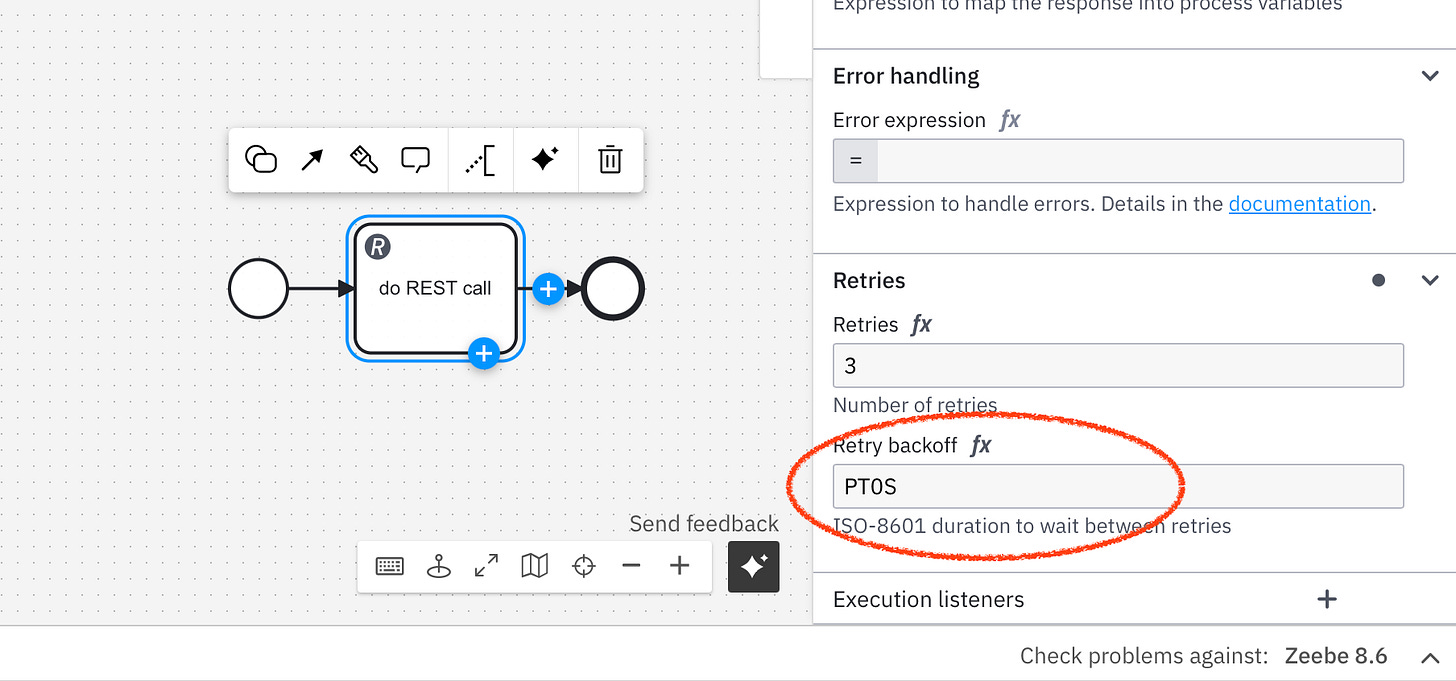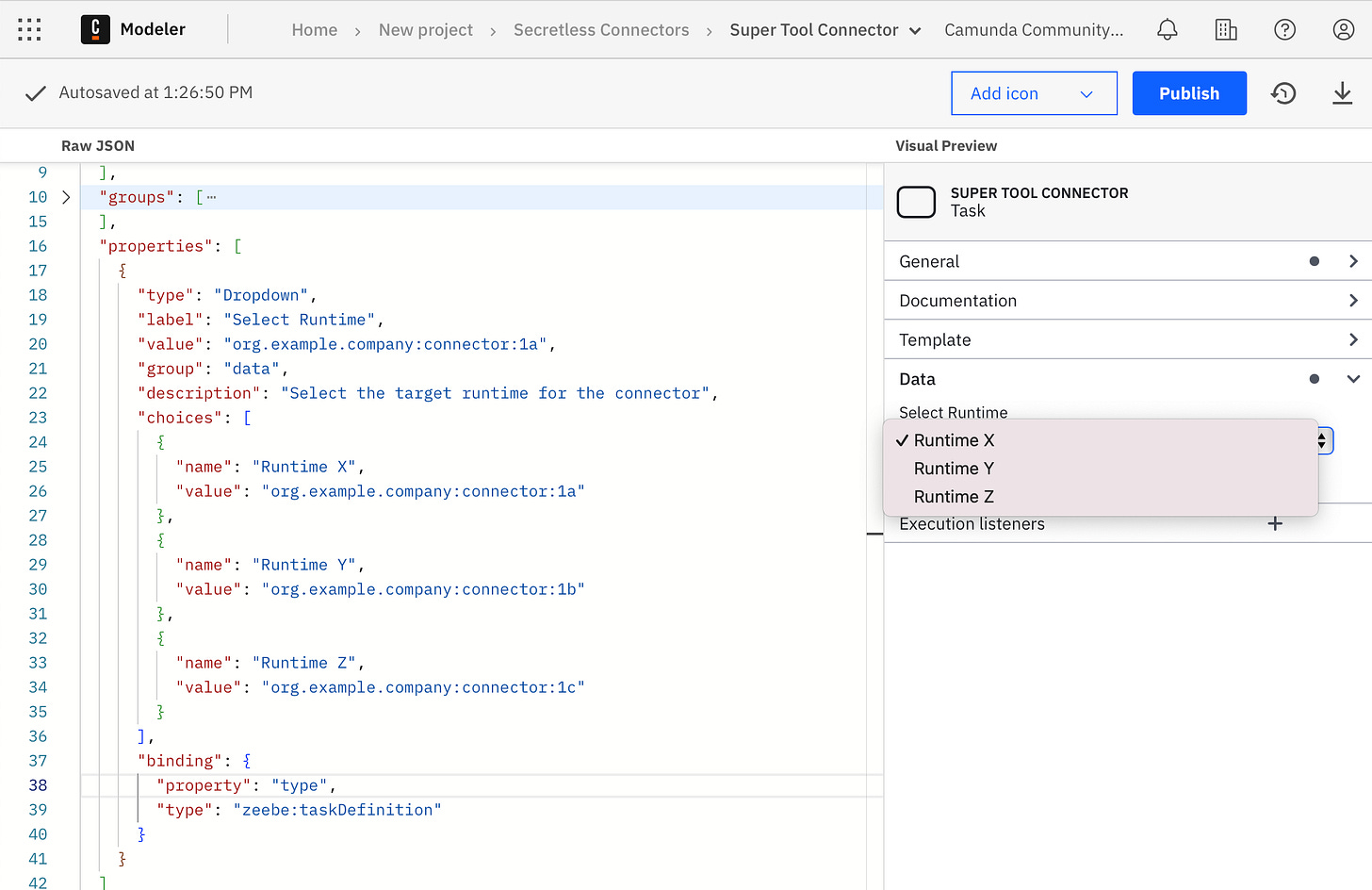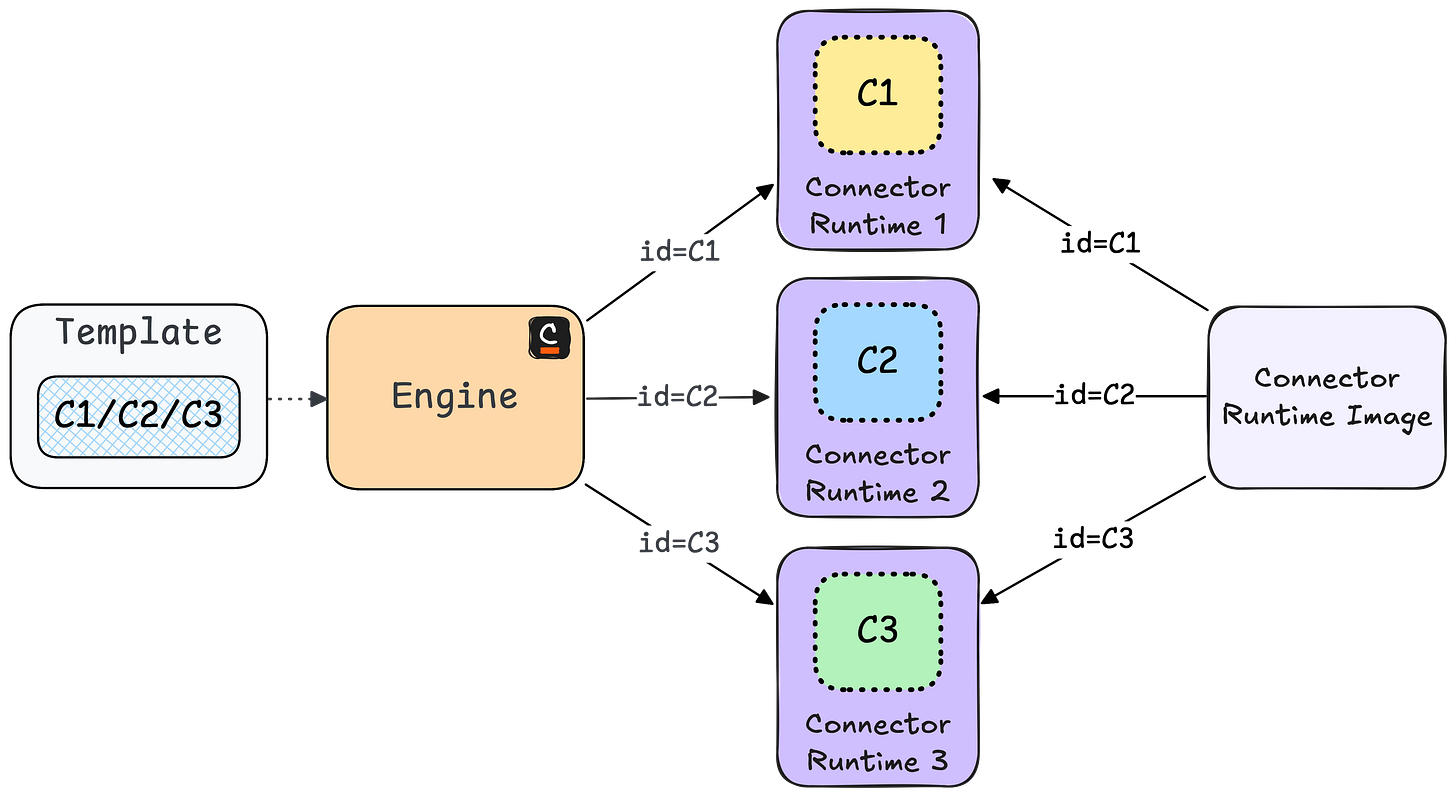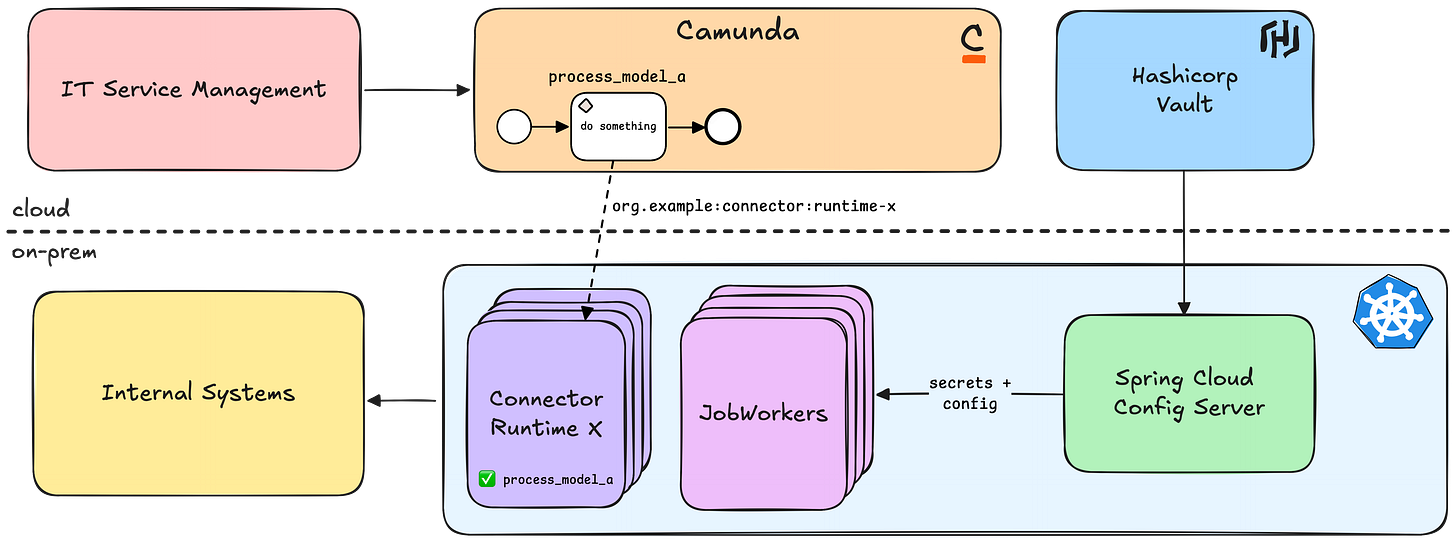Secure Process Automation at Scale with Camunda and HashiCorp Vault
A Real-Life Success Story From a Customer in Critical Infrastructure
Security affects every industry, no matter the size or the sector. Whether you’re in finance, healthcare, retail, or energy, the risks are real and often costly. IBM’s annual Cost of a Data Breach report makes that painfully clear. In their 2024 edition, they surveyed hundreds of companies worldwide and found that data breaches continue to rise in frequency and impact, with average costs often running into the millions. And the top initial attack vector? Stolen or compromised credentials.
That’s a serious issue for anyone building systems that move data or trigger actions, and process automation is no exception. If anything, it’s more exposed. Automated processes typically connect multiple systems, pass data across service boundaries, and require credentials to access APIs or downstream tools. That makes secret management and secure architecture not just a best practice, but a necessity.
I’m currently employed by a customer in the critical infrastructure sector. They’re highly regulated and take security very seriously, making basic authentication a taboo subject.
I was tasked with helping to develop a scalable target architecture for the new process platform. This architecture should support multiple JobWorkers and Connectors to integrate systems, as well as a third-party secret provider called HashiCorp Vault. We need to support multiple business units as well, which will all have their own connectors, secrets and processes.
Let’s dive into the solution we found and the reasons leading to it.
Finding a Good Target Architecture
The initial landscape already has some great cornerstones in place. We’re using Kubernetes as the runtime for applications, Camunda to orchestrate processes, and Vault to manage the credentials of the target systems.
There were three big questions we needed to address first:
How many runtime applications do we need?
How do we get secrets into the runtime(s)?
How can we support secret rotation?
Let’s take a look at the solutions we came up with.
How Many Runtimes?
Initially, we had to make a decision about the number of connector and job worker runtimes. We’re going to automate several processes for each of the business units, provide shared and individual connectors as well as job workers, and have some shared processes, but also some individual processes.
Additionally, we’re facing a distributed responsibility model. There are several business units owning the processes, from modeling to deploying them, but they’re automated and tested by another unit. Also, after deploying the processes and runtimes, another unit takes over the monitoring of said components. They’ll handle incidents and monitor the applications.
Since scalability and fully separation of business units were the most important requirement, we decided to provide one connector runtime and one job worker runtime for each business unit. This approach initially resulted in two applications, as we started migrating processes from a single business unit. This would ensure, that units can scale out and prevent secrets being leaked to unintended eyes, since they are not shared in a runtime.
We have to remember though that this means, our ops team has to take care of multiple applications now. This could lead to a lot of overhead. We decided to take this risk for now. Merging runtimes in the future is possible, and we’ll keep an eye on future developments.
Getting Secrets Out of Vault
Since the runtime count matter is resolved, we can now concentrate on the next phase. How can we transfer our secrets from Vault to our applications?
About HashiCorp Vault
HashiCorp is the company behind some of the most widely used infrastructure tools out there. You might know them from Terraform, which is used for infrastructure as code. Their focus is on helping teams automate and secure infrastructure in cloud and hybrid environments.
In 2024, they were acquired by IBM for around $6.4 billion, which shows just how important their tools have become, especially in enterprise setups.
One of their most important tools is Vault. It’s a secrets management system that helps you store and control access to sensitive data like passwords, API keys, certificates, and tokens. Vault supports features like audit logging, encryption, access control, and even dynamic secrets, so credentials can expire and rotate automatically.
It’s made for setups where you’re working with a lot of different services and systems, and you want to manage secrets in a secure and centralized way.
Retrieval Phases
There are two main approaches to retrieving secrets: static at application startup or dynamically during runtime.
Both approaches have their advantages and disadvantages.
Loading secrets at startup is faster, but it makes it more challenging to reload changed secret values. You’d need to restart your application. Additionally, keeping secrets in-memory generally poses some security risks. Someone could obtain a memory dump or a corrupted library could access them.
Loading secrets at runtime ensures that your secrets are always up-to-date. However, it adds additional latency and complexity, especially when loading secrets for every execution. Caching can help mitigate this issue, but it also introduces a separate lifecycle for your application that requires management. So be careful when deciding that.
Ultimately, you must choose the approach that best suits your needs.
Our Hybrid Approach
We decided to follow a hybrid mode between both modes. At the customer, we weren’t able to access Vault directly but only had the possibility to read secrets from a central Spring Cloud Config Server instance, that was used to fetch secrets during runtime.
The server would unseal Vault and get the secrets every time a client would ask for them, and seal the Vault again, keeping secrets safe. The secrets are loaded during startup of our runtime, keeping them in-memory during its lifecycle. This means that we have to restart our applications if secrets change. But this is a compromise we’re ready to take on.
The communication between config server and client is also restricted. We’ll hand in those secrets in a separate phase, before we connect to the server to get the runtime secrets.
Security Aspects
We’re aware of the security implications of this solution, so let me quickly dive into some cornerstones in the setup:
Communication between Vault and Kubernetes is secured by using https.
The Vault backend encrypts secrets in transit and rest.
Traffic is restricted from and to the config server.
Spring Security is used to disable actuator endpoints that might leak configurations.
Restricted logging
Secret related properties are e.g. excluded from toString() calls.
Additionally, we use a log interceptor to mask certain property values, if they contain password or secret etc. in the property name.
With this, the risk of an incident is quite low, making it a balance between security and pragmatism. Here you can see a schema of our technical design with all the places where we applied some additional security measures.
In the process we also found out, that it is no longer necessary to use a secret provider to get secrets into the connector runtime. We were able to remove all secret-related fields from connector templates, making them a bit dumber. The runtime knows all the secrets and can use them to initialize clients, no need for modelers to care about this.
This solution provides sufficient flexibility to manage multiple runtimes while maintaining centralization and utilizing existing solutions in our landscape. However, it also introduces new challenges that necessitate our attention.
Open Issues
We now know the number of runtimes and how we get secrets in them securely. But we also have some issues left.
Given the existence of multiple connector runtimes, we now need a separate connector template for each runtime when sharing a connector over multiple units, even though the connector itself remains unchanged. The duplication of making changes across all templates is very unfortunate.
Furthermore, we aim to ensure that altering secret values does not result in incidents affecting job workers or the connector runtimes. This also has to be addressed.
Support of Secret Rotation
The easy one first. Camunda offers several mechanisms to avoid incidents due to changing secret values. Every time a task fails, e.g. due to invalid secrets, the process engine uses a number of retry attempts before an incident is created.
If credentials are invalid, it will repeat the call until it either works, or the amount of retries is exhausted. By default, Camunda doesn’t wait between retries, giving us a relatively small timeframe to fix the issue. For that we can use a mechanism called retry backoff.
In BPMN
A connector template can have a specific field where you can set a backoff time. The value is sent as a task header to the engine. The engine will wait this amount of time before a new retry is attempted. In the meantime we can e.g. restart our connector runtime to refresh the changed value.
In Java Code
We can also use the Java client or Camunda’s SDK to handle retry backoff in workers and connectors.
In the Zeebe client, the FailCommand has a property that can be set with a custom backoff duration. This leads to a retry backoff for job workers giving us enough time to restart the runtime.
try {
authenticate();
// do worker logic here...
} catch (AuthException e) {
// fail job with custom retry back-off
client.newFailCommand(job)
.retries(job.getRetries() - 1)
.retryBackoff(Duration.ofSeconds(60)) // wait 60s!
.errorMessage("Authentication failed!")
.send()
.join();
}For connectors we can use a ConnectorRetryExceptionBuilder from the Java SDK, to do the same thing.
try {
authenticate();
// do connector logic here...
} catch (AuthException e) {
// fail connector with custom retry back-off
throw new ConnectorRetryExceptionBuilder()
.retries(retries - 1)
.backoffDuration(Duration.ofSeconds(60)) // wait 60s!
.errorCode("AUTH_EXCEPTION")
.message("Authentication failed!")
.build();
}With the backoff in place, it is possible to restart the application without Camunda raising an incident due to exhausted retries.
We are still figuring out how we can automate the restart. Secrets do not change very often, so we started with a manual restart until we find a good solution. This could be regular scheduled startup or e.g. done by Kubernetes.
Avoiding Duplicate Connector Templates
Now, we also covered secret rotation leaving us with the issue of duplicated connector templates.
The solution to this was also relatively easy to execute. The only thing that has to change is the id in the connector runtime and the template. This id is used by the engine to assign a certain job to a connector runtime.
In the template, this value is normally hidden for users, but one can also just set it as a dynamic value by making the field visible in the modeler. Since we want to make sure that the correct value is set, we decided to offer a simple drop-down menu in our templates, with all existing runtimes.
We can still use the same connector runtime image for each business unit, since we are able to overwrite the connector id in each container as well. This is called hybrid mode, since you can use one template for several runtimes.
To prevent one business unit from connecting to an incorrect runtime, we introduce an allowlist for processes per runtime. This list contains all the process IDs that the runtime is intended to work with. Any calls from other processes are rejected.
The Final Target Architecture
All these decisions lead us to the following architecture, which provides secrets for all runtimes and ensures flexibility under load.
We ensured that components, that would normally scale with the number of runtimes, stay constant, while still ensuring that business units can scale. The only downside to this setup is, that our ops team has to monitor multiple applications now instead of one big runtime. We will monitor this and see if we have to adapt in the future with more business units joining the platform.
How Scalable and Secure is This Architecture?
We separated business units from each other by providing separate runtimes for them. With Kubernetes we are able to scale each runtime individually based on usage. Connector templates provide a list of possible runtimes, with each runtime guards their workers from unintended process access.
Secrets are loaded once at startup. We keep them outside of the engine and connector templates, ensuring they are not accidentally leaked. We support secret rotation by using Camunda’s retry with backoff mechanism for both workers and connectors. This way we keep secrets save and still offer flexibility to rotate them regularly without affecting customers.
Secrets are encrypted during transport and rest, and we have precautions in place to prevent accidental logging.
We use modern mechanisms of a distributed system to ensure operability even though some components are not available due to restarts.
Some Final Thoughts
This architecture is heavily based on customer requirements. This is the optimal solution for us. We tried to keep best practices in place and only diverge where really necessary.
The architecture of Camunda 8 heavily supported our use case. We ensure fault tolerance and uptime, while being able to switch things around in the background. This wouldn’t be possible if Camunda’s engine is embedded into our application. This is also one of the reasons why Camunda was chosen as orchestration provider.
This post is based on my talk at CamundaCon Amsterdam 2025.



